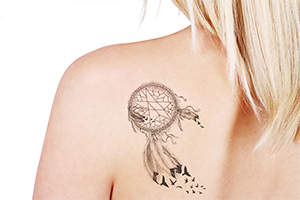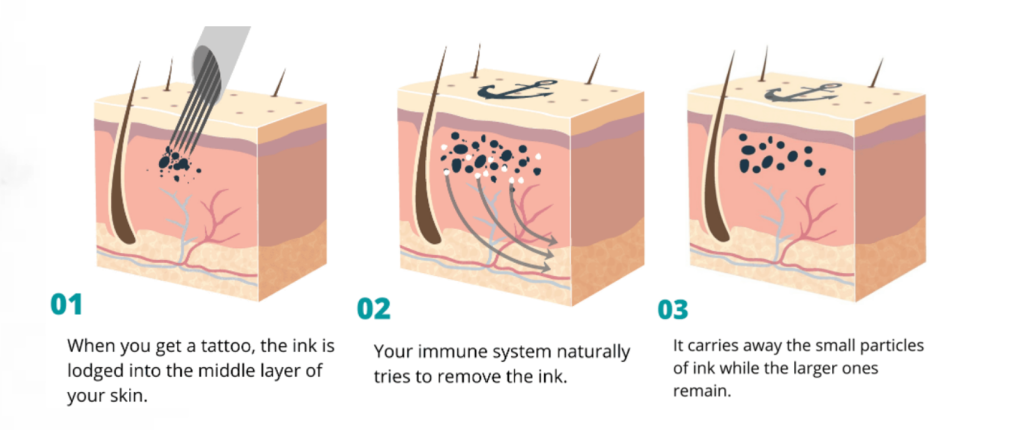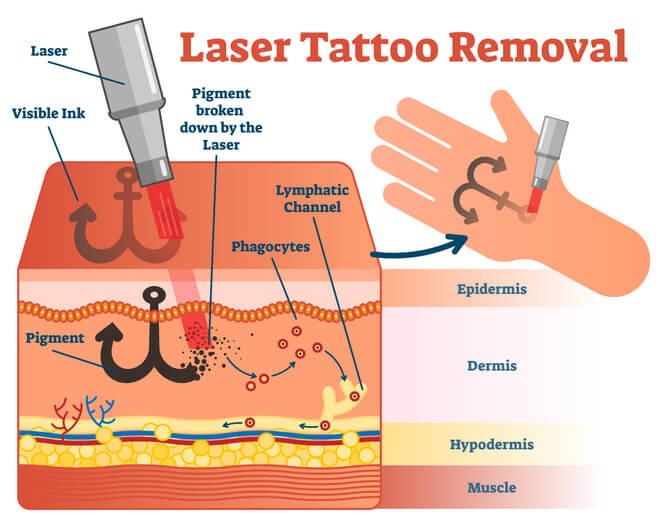Comparative Analysis of EMS Body Slimming Machines: RF vs Non-RF Technologies
July 04, 2025How tattoos work
May 30,2022
To understand how tattoo removal works, you must also understand how tattoos work. Once the tattoo ink is in the middle layer of your skin, your body’s immune system sends white blood cells to the tattooed area to pump out as many ink particles as possible. Larger particles that cells cannot break down can leave tattoo designs. Over time, these cells break down larger particles, causing natural discoloration.

How Laser Tattoo Removal Works
Tattoo removal is accomplished by breaking down those larger ink particles layer by layer. Your body’s white blood cells can then carry away smaller broken down particles faster. With time and continued treatment, the tattoo can be completely removed.

Each pulse of energy penetrates the skin and is absorbed by the tattoo ink. As the tattoo ink particles absorb energy, they heat up and then shatter into tiny fragments. Then, in the weeks following treatment, the body’s immune system flushes the tattoo ink particles from the location, lightening the appearance of the tattoo. Each laser treatment will break down more and more of the tattoo ink until there is no residue left.
By contrast, skin cells are much larger and take longer to heat to be damaged. Because the pulses of the Q-switched laser are so short, it is able to heat and pulverize the tattoo ink without heating the surrounding skin tissue. Essentially, the brief nature of the Q-switched laser pulses allows the practitioner to selectively destroy tattoo ink particles while leaving the surrounding skin intact.
Because the purpose of laser tattoo removal is for the tattoo ink to absorb the laser light, you want to make sure that the wavelengths you use are well absorbed by the tattoo. Going back to the red tattoo example, the red ink should be treated with a green laser because it absorbs the green light (which heats up and shatters the ink particles). Since the 532 nm wavelength laser looks noticeably green, it is an ideal wavelength for red tattoos.
Lasers remove tattoos by breaking up larger ink particles into fragments small enough for white blood cells to absorb them. To break up the ink particles, you need to heat them so that they expand due to thermal expansion, but the shock must be fast enough to keep half of the particles cool. The opposing cold and heat forces then separate the ink particles into smaller pieces.
Once the laser breaks the ink particles into small enough pieces, white blood cells can take them up for transport to the liver and elimination.

When treating multi-colored tattoos, it is important to be able to use a variety of laser wavelengths for the versatility of the treatment. The most commonly used wavelengths for laser tattoo removal are 1064 nm and 532 nm – they treat over 95% of tattoos. Other wavelengths used by some practitioners are 755 nm and 694 nm – these wavelengths function very similarly and can be used to handle rare ink colors such as bright blues or greens.
Make the body work
Removing a tattoo is not an immediate solution – it usually takes several months for the patient. Most tattoos require 5 to 10 treatments to completely remove, and treatments must be spaced at least 6 weeks apart. Patients often ask why tattoo removal requires so many treatments, and why they have to wait between treatments. As a practitioner, it is important to know the answers to these questions to provide informative patient counseling.
Macrophage laser tattoo removal requires multiple treatments as not all tattoo ink can be shattered in a single treatment. When tattooing, the ink is injected into the dermis at various depths. When the laser hits the skin, the lightest layer of ink in the dermis absorbs the energy and shatters, but the deeper layers may not be affected. The deeper layers of ink can only be processed when the body washes away the top layer of ink. In fact, each successive tattoo removal treatment affects deeper and deeper layers of ink until no trace is left.
Patients need to wait between treatments because the body needs time to wash the broken tattoo ink away from the tattoo site. The process of flushing out ink involves immune system phagocytes gradually moving ink particles to lymph nodes, where the pigment remains. Because the body can only flush ink away at a certain rate, it is beneficial to wait as long as possible between treatments in order to see the greatest fading in each treatment. Additionally, the waiting period allows any scabs or blisters to heal, minimizing the chance of over-treating the area and causing unwanted side effects.